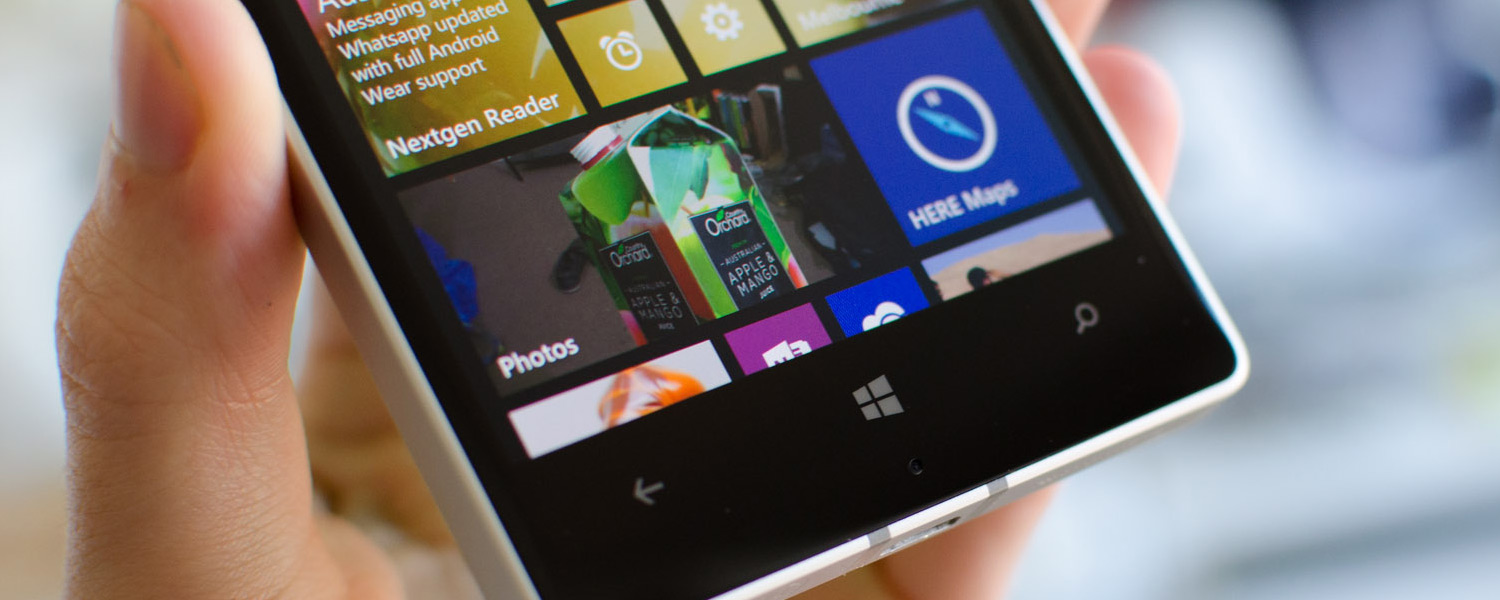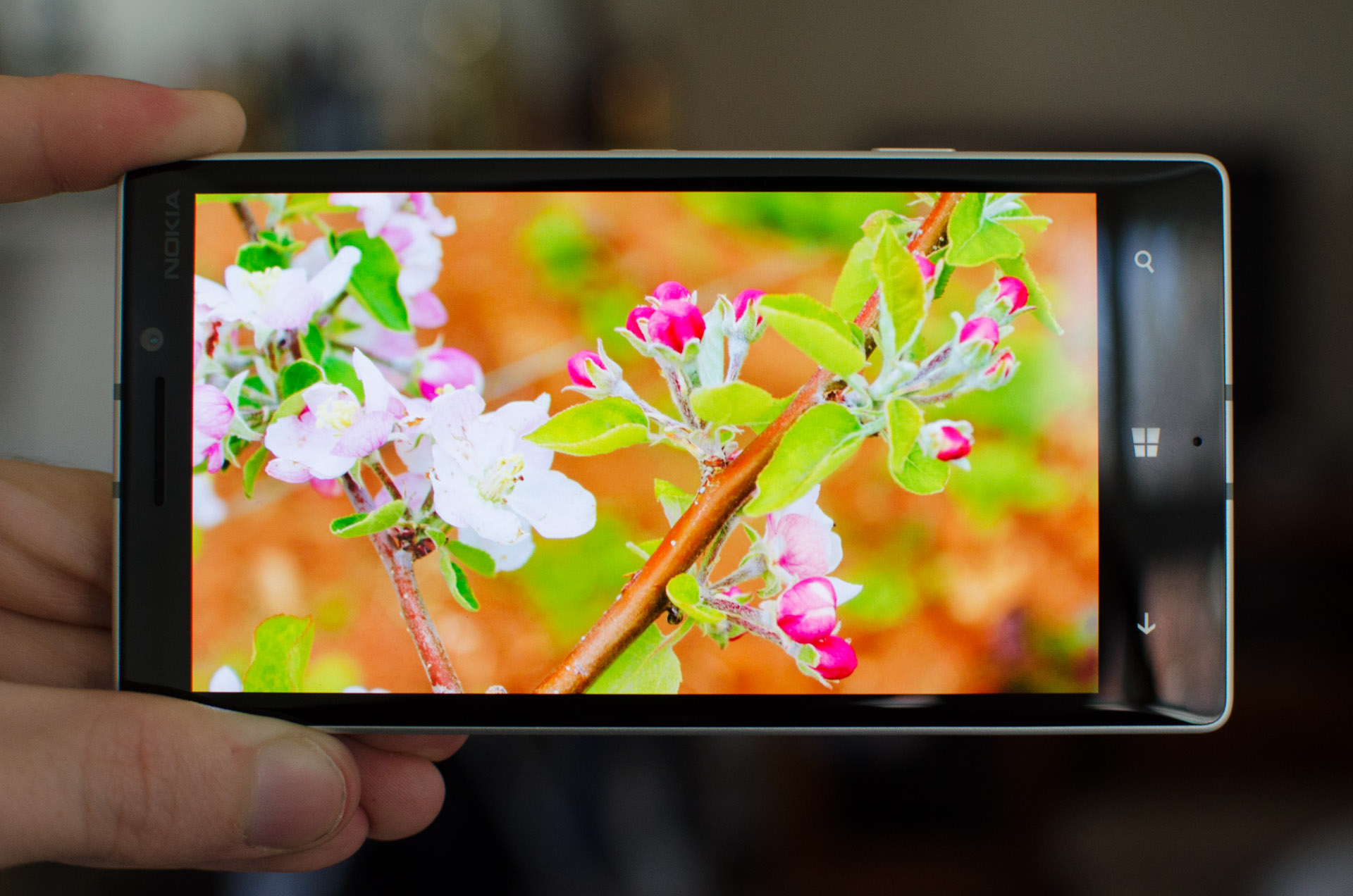Display: Five Inches of AMOLED
Mostly due to the hardware restrictions of Windows Phone, Nokia has typically been a step behind the game with their flagship smartphones. The Lumia 925 from mid-last year packed a 720p display while the competition had moved to 1080p some six months earlier, leaving it behind the pack until the up-to-date Lumia 1520 arrived a few months later.
Thankfully, outdated hardware is no longer the norm with Windows Phones. The Lumia 930 packs a 5.0-inch AMOLED display with a resolution of 1920 x 1080, which is exactly what you'd expect from a high-end smartphone in 2014. Nokia also boasts a pixel density of 441 PPI, 'ClearBlack' technology, and the super-sensitive touchscreen we first saw in the Lumia 920.
Packing a pixel density of 441 PPI, the AMOLED panel has to use a PenTile RGBG subpixel arrangement, which means the display has a lower subpixel resolution compared to RGB stripe 1080p LCDs. This isn't unusual for an AMOLED display - the Samsung Galaxy S5's display is also PenTile - and unless you have eagle eyes trained to spot defects in smartphone displays, you won't notice the difference.
As you'd expect from a high resolution smartphone display like the one on the Lumia 930, images look unbelievably crisp, providing a level of clarity above what you'd get from now-mid-range 720p panels. Even though Windows Phone doesn't make use of thin fonts like Android or iOS, text still looks fantastic as well, having the sharpness of printed material.
Since the launch of the LG G3 with its 5.5-inch Quad HD display, 1080p hasn't been the highest resolution that panels of this size can achieve. However, at this stage at least, there doesn't seem to be any great benefit to the shift to 1440p, so I wouldn't at all feel like you're missing out on the best stuff with the Lumia 930's AMOLED. Plus, you don't get the performance and battery life hit associated with the upgrade.
One great benefit to having an AMOLED panel is deep blacks, as regions of the display are effectively 'off' when producing black, due to the AMOLED's lack of a backlight. This is especially beneficial for Windows Phone, which has many mostly black screens throughout the OS and its apps. Another benefit is an effectively infinite contrast ratio, putting LCDs to shame.
The benefit of deep blacks comes with a trade-off: maximum brightness typically isn't as good as what you'd get from an LCD. AMOLEDs certainly have progressed in the brightness department since a number of poor showings over the years, and I was generally pleased with how bright the Lumia 930's panel is, but it's not as bright as the HTC One M8 or Sony Xperia Z2's fantastic LCDs.
Nokia has included several features in the Lumia 930 to combat the downside of inherently lower brightness from the AMOLED panel. Firstly, their 'ClearBlack' technology introduces several polarization layers into the screen, significantly reducing reflections from bright sources such as the sun. As I've noted with past Nokia smartphones, these filters are quite effective.
The second feature is the software-based Sunlight Readability mode, which attempts to improve screen readability in bright conditions through changing the tone and white balance of the display. The idea here is to create more contrast between black and colored areas of the display, making it easier to read text. In this respect it can work well at the best of times.
That said, I'm not a fan of stepping out into the sun and having the color tone of the display completely shift to a washed-out mess. Often Sunlight Readability mode is activated in conditions where I can easily read the display already, and sometimes while straddling the boundary of its activation criteria, shifting the angle at which I hold the handset causes the display's tone to shift back and forth.
So while the idea is there, the execution isn't great, and that's why I'd recommend you disable Sunlight Readability mode unless you are really struggling to read the display outdoors.
Nokia has done a great job at taming the Lumia 930's AMOLED display to make it both vibrant and accurate. During my testing of the panel, nothing screamed out as being oversaturated, like you get with the Samsung Galaxy S5, yet images and graphics still look fantastic in many situations. So as far as color quality is concerned, this is one of the better AMOLEDs I've used.
Like with some of Nokia's past handsets, you also have a degree of control over how the display looks. Jump into the display settings, and there's a drop down menu that changes the color profile based on preset values, with a more advanced selection of sliders also being available. Personally I prefer how the display looks on Standard mode, but you have the flexibility to play around with saturation and white balance if you'd like to do so.
There are also a few touchscreen-related features included with the Nokia Lumia 930, first and foremost the high sensitivity touch mode that allows you to use the display with gloves on. This setting is enabled by default, and I'd recommend you turn it back to normal sensitivity to conserve battery life if you're not in a cold climate.
Like past handsets from Nokia you also get the option to turn on the display through double-tapping the touchscreen. With the power button in a slightly inconvenient location, I appreciate the inclusion of this setting, even if it does (again) consume slightly more energy.





